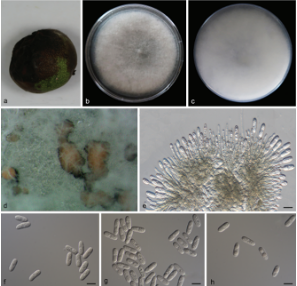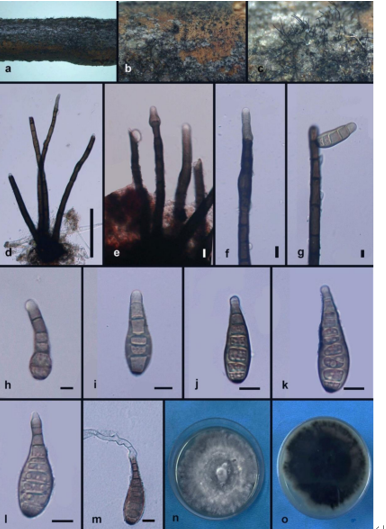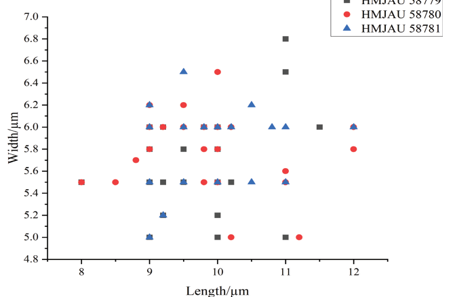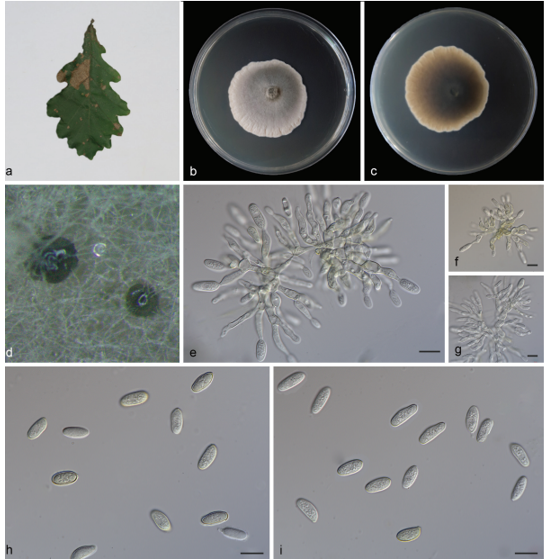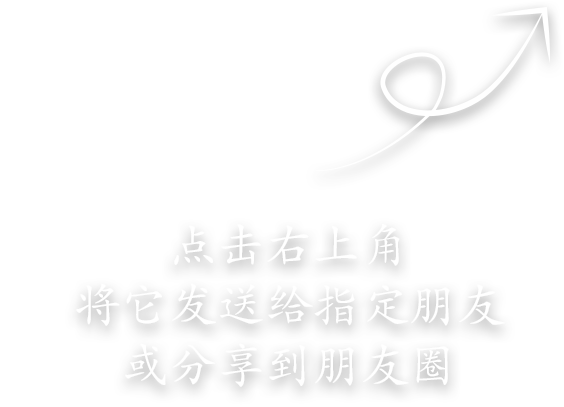Tomentella cystidiata H.S. Yuan & Y.C. Dai 2020
Index Fungorum number: IF555694; Facesoffungi number: FoF 05613
Holotype: CHINA, Liaoning Province, Huanren County, Laotudingzi Nature Reserve, on rotten angiosperm wood debris, 21 October 2015, Yuan 10693 (IFP 019262, holotype), Yuan 10704; Qingyuan County, Experimental Station of Forest Ecology, on rotten angiosperm wood debris, 10 October 2015, Yuan 10620 (IFP 019261).
Morphological description
Basidiocarps annual, resupinate, separable from the substrate, arachnoid, without odour or taste when fresh, 0.4–0.6 mm thick, continuous. Hymenophoral surface smooth, brown to dark brown (7E5–7F6) and darker than subiculum when dry. Sterile margin often indeterminate, byssoid, paler than hymenophore. Subiculum mostly brown. Rhizomorphs present in subiculum, 10–30 μm diam; rhizomorphic surface more or less smooth; hyphae in rhizomorph monomitic, differentiated, of type C, compactly arranged; hyphae in central rhizomorph clamped, thick-walled, unbranched, 3–4 μm diam; hyphae at outer part of rhizomorph clamped, thick-walled, unbranched, 1.5–2.5 μm diam; all the hyphae greyish orange in KOH, cyanophilous, inamyloid. Subicular hyphae monomitic; generative hyphae with both of clamps and simple septa, slightly thick- to distinctly thick-walled, rarely branched, 4–6 μm diam, occasionally collapsed, not encrusted, orange in KOH, cyanophilous, inamyloid. Subhymenial hyphae clamped, thin- to slightly thick-walled, rarely branched, 4–6 μm diam; hyphal cells more or less uniform, orange in KOH, cyanophilous, inamyloid. Cystidiaarising from subhymenial or subicular hyphae, thin-walled, 50–65 μm long, 5–6 μm diam at base and 9–10 μm diam at apex, capitate, embedded, without encrustation, pale brown in KOH. Basidia 25–65 μm long and 6–8 μm diam at apex, 5–7 μm at base, with a clamp connection at base, clavate, stalked, sinuous, rarely with transverse septa, orange in KOH, yellowish brown in distilled water, 4-sterigmate; sterigmata 2.5–4.5 μm long and 1–2.5 μm diam at base. Basidiospores thick-walled, (7.5–)7.9–9(–9.5)×(5.5–)6.1–8(–8.5) μm, L=8.53 μm, W=7.47 μm, Q =1.12–1.16 (n=60/2), irregularly subglobose or lobed in frontal and lateral views, aculeate, reddish orange in KOH, reddish orange in distilled water, cyanophilous, inamyloid; echinuli usually isolated, sometimes grouped in 2 or more, up to 2.5 μm long.
Habitat: On rotten angiosperm wood debris.
Distribution: In China.
GenBank Accession: ITS: KY686219, KY686218; LSU: MK446354, MK446353.
Notes: Tomentella capitata is similar to T. cystidiata by having brown to dark brown, continous basidiocarps separable from the substrate, the presence of rhizomorphs and capitate cystidia, thin- to thick-walled subhymenial hyphae and basidiospores of approximately the same shape and size. However, it differs in its granulose or farinose hymenophore, the presence of cystidia from the rhizomorphic surface and the absence of simple septa in the subicular hyphae (Yorou et al. 2007). T. pilosa resembles T. cystidiata by having arachnoid basidiocarps separable from the substrate, a byssoid sterile margin, the presence of rhizomorphs and capitate cystidia, and basidiospores of approximately the same shape and size. But, it differs by the pale coloured hymenophore surface, the rhizomorphs with a monomitic to dimitic hyphal structure and the absence of simple septa in the subicular hyphae (Kõljalg 1996).
Reference: Hai‑Sheng Yuan1,2· Xu Lu1,2 · Yu‑Cheng Dai3 ·
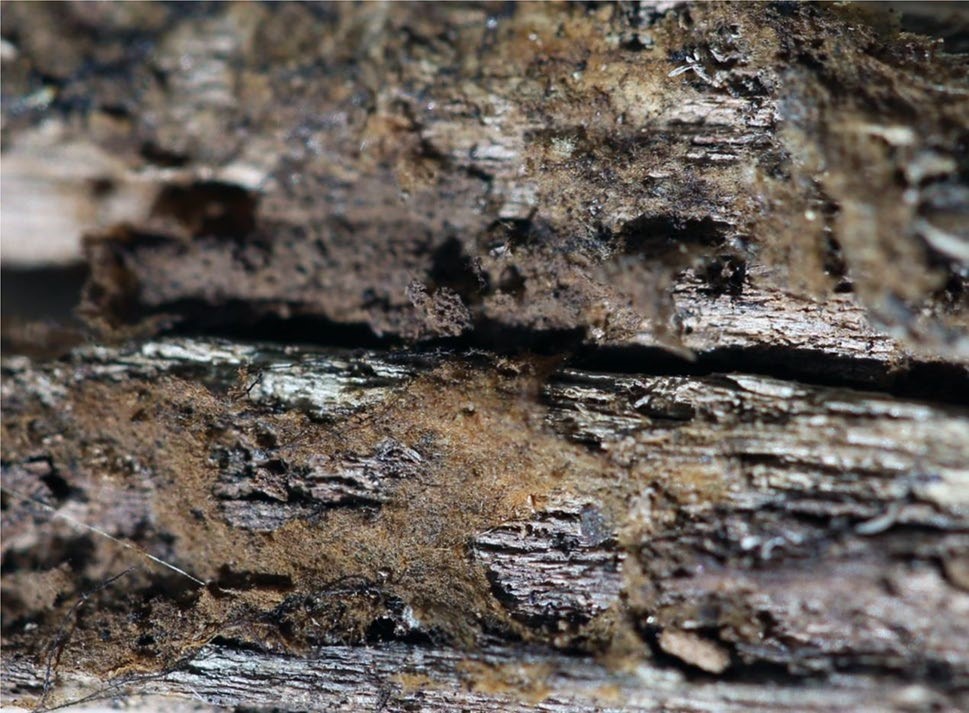
A basidiocarp of Tomentella cystidiata (IFP 019262, holotype)


